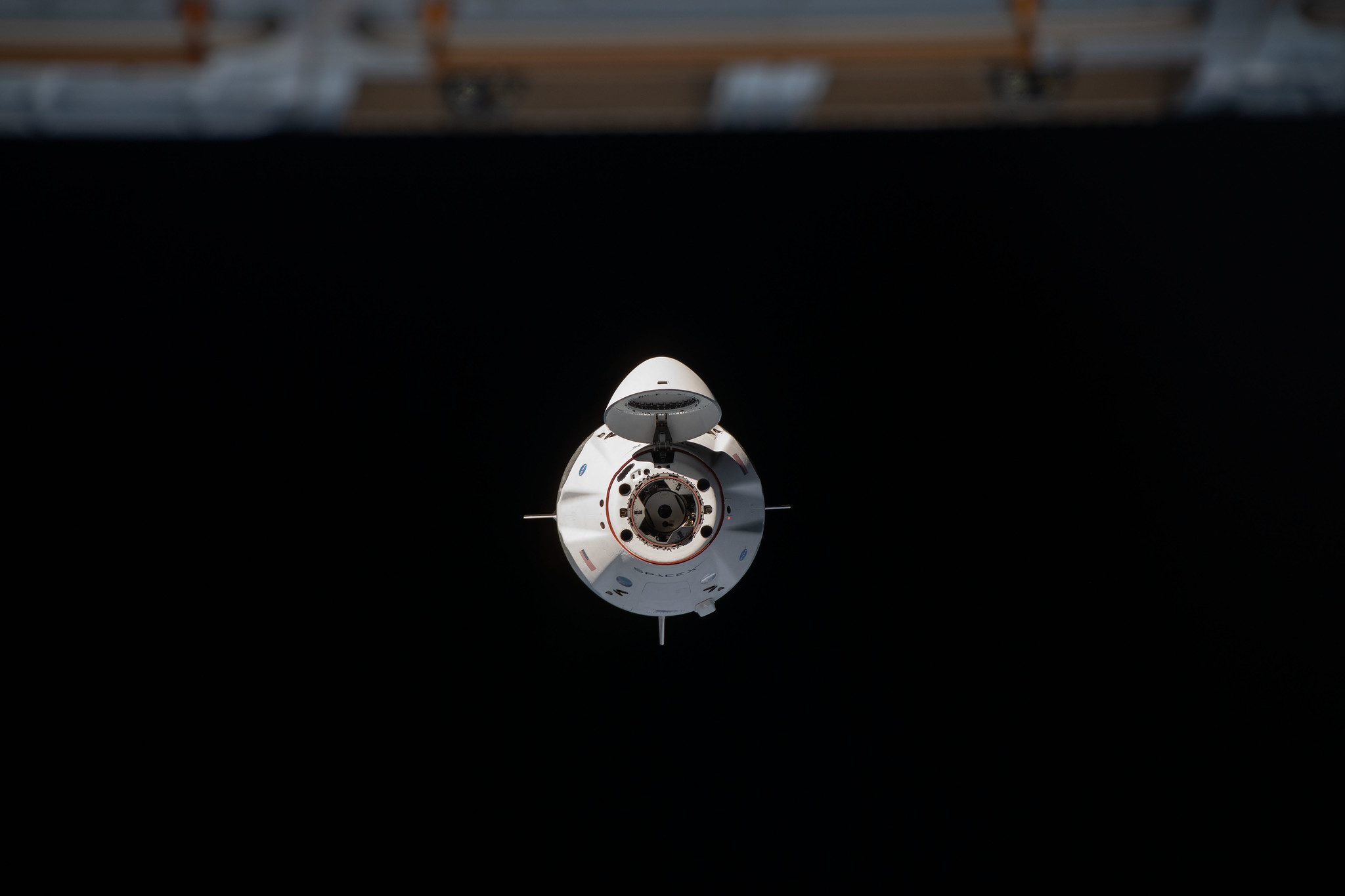Editor’s Note: This advisory was updated on Jan. 11 to reflect the new targeted departure date and the correct weight of returning science and cargo.
The SpaceX Dragon that arrived to the International Space Station on the company’s 21st resupply services mission for NASA is scheduled to depart on Tuesday, Jan. 12, loaded with 4,400 pounds of scientific experiments and other cargo. NASA Television and the agency’s website will broadcast its departure live beginning at 8 a.m. EST.
The upgraded Dragon spacecraft will execute the first undocking of a U.S. commercial cargo craft from the International Docking Adapter about 8:40 a.m., with NASA astronaut Victor Glover monitoring aboard the station.
Dragon will fire its thrusters to move a safe distance from the station’s space-facing port of the Harmony module, then initiate a deorbit burn to begin its re-entry sequence into Earth’s atmosphere. Dragon is expected to make its parachute-assisted splashdown around 8:14 p.m. Wednesday, Jan. 13 – the first return of a cargo resupply spacecraft in the Atlantic Ocean. The deorbit burn and splashdown will not air on NASA TV.
Splashing down off the coast of Florida enables quick transportation of the science aboard the capsule to the agency’s Kennedy Space Center’s Space Station Processing Facility, and back into the hands of the researchers. This shorter transportation timeframe allows researchers to collect data with minimal loss of microgravity effects. For splashdowns in the Pacific Ocean, quick-return science cargo is processed at SpaceX’s facility in McGregor, Texas, and delivered to NASA’s Johnson Space Center in Houston.
Dragon launched Dec. 6 on a SpaceX Falcon 9 rocket from Launch Complex 39A at NASA’s Kennedy Space Center in Florida, arriving at the station just over 24 hours later and achieving the first autonomous docking of a U.S. commercial cargo resupply spacecraft. Previous arriving cargo Dragon spacecraft were captured and attached to the space station by astronauts operating the station’s robotic Canadarm2. The spacecraft delivered more than 6,400 pounds of hardware, research investigations and crew supplies.
The upgraded cargo Dragon capsule used for this mission contains double the powered locker availability of previous capsules, allowing for a significant increase in the research that can be carried back to Earth.
Some of the scientific investigations Dragon will return to Earth include:
Cardinal Heart
Microgravity causes changes in the workload and shape of the human heart, and it is still unknown whether these changes could become permanent if a person lived more than a year in space. Cardinal Heart studies how changes in gravity affect cardiovascular cells at the cellular and tissue level using 3D-engineered heart tissues, a type of tissue chip. Results could provide new understanding of heart problems on Earth, help identify new treatments, and support development of screening measures to predict cardiovascular risk prior to spaceflight.
Space Organogenesis
This investigation from JAXA (Japan Aerospace Exploration Agency) demonstrates the growth of 3D organ buds from human stem cells to analyze changes in gene expression. Cell cultures on Earth need supportive materials or forces to achieve 3D growth, but in microgravity, cell cultures can expand into three dimensions without those devices. Results from this investigation could demonstrate advantages of using microgravity for cutting-edge developments in regenerative medicine and may contribute to the establishment of technologies needed to create artificial organs.
Sextant Navigation
The sextant used in the Sextant Navigation experiment will be returning to Earth. Sextants have a small telescope-like optical sight to take precise angle measurements between pairs of stars from land or sea, enabling navigation without computer assistance. Sailors have navigated via sextants for centuries, and NASA’s Gemini missions conducted the first sextant sightings from a spacecraft. This investigation tested specific techniques for using a sextant for emergency navigation on spacecraft such as NASA’s Orion, which will carry humans on deep-space missions.
Rodent Research-23
This experiment studies the function of arteries, veins, and lymphatic structures in the eye and changes in the retina of mice before and after spaceflight. The aim is to clarify whether these changes impair visual function. At least 40 percent of astronauts experience vision impairment known as Spaceflight-Associated Neuro-ocular Syndrome (SANS) on long-duration spaceflights, which could adversely affect mission success.
Thermal Amine Scrubber
This technology demonstration tested a method to remove carbon dioxide (CO2) from air aboard the International Space Station, using actively heated and cooled amine beds. Controlling CO2 levels on the station reduces the likelihood of crew members experiencing symptoms of CO2 buildup, which include fatigue, headache, breathing difficulties, strained eyes, and itchy skin.
Bacterial Adhesion and Corrosion
Bacteria and other microorganisms have been shown to grow as biofilm communities in microgravity. This experiment identifies the bacterial genes used during biofilm growth, examines whether these biofilms can corrode stainless steel, and evaluates the effectiveness of a silver-based disinfectant. This investigation could provide insight into better ways to control and remove resistant biofilms, contributing to the success of future long-duration spaceflights.
Learn more about SpaceX missions for NASA at:
Get breaking news, images and features from the space station on Instagram, Facebook, and Twitter.
-end-
Stephanie Schierholz / Monica Witt
Headquarters, Washington
202-358-1100
stephanie.schierholz@nasa.gov / monica.j.witt@nasa.gov
Leah Cheshier
Johnson Space Center, Houston
281-483-5111
leah.d.cheshier@nasa.gov

























